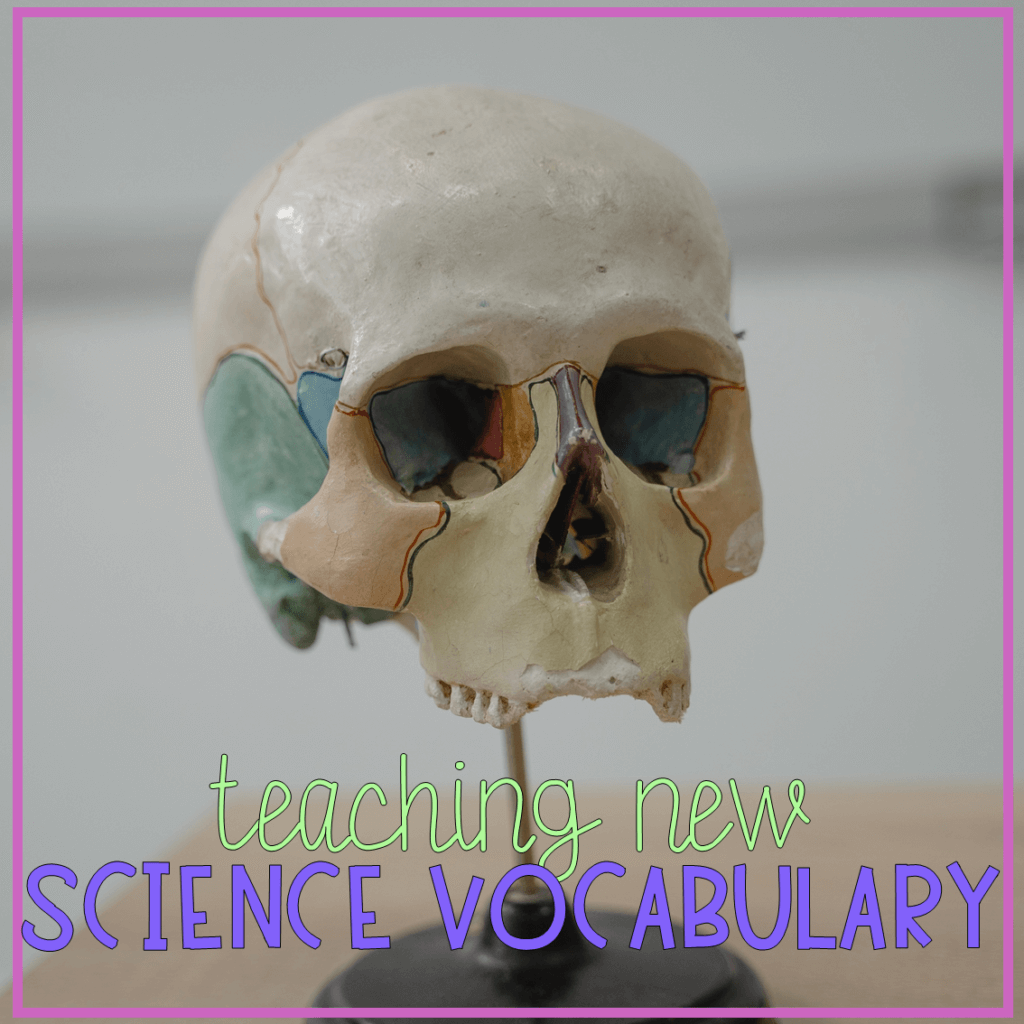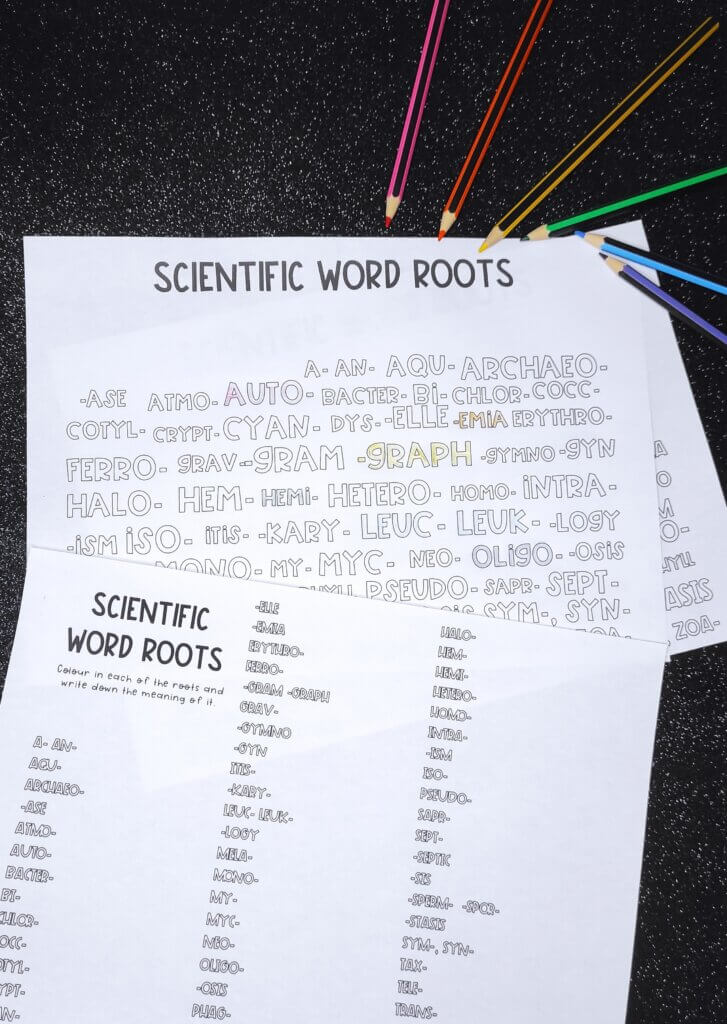No matter if you are a new science teacher or an experienced one: you know the struggle of teaching vocabulary for science classes. So I will tell you my activities for introducing new science vocabulary in middle school classes.
Contenidos
Introducing new science vocabulary can be easy with a system
I love introducing new science vocabulary to students, it is one of the most important tools scientists have, as it allows them to easily communicate even though they may not speak the same mother tongue. That’s why I like teaching my students vocabulary in a unique way: by giving them as many tools as I can to ensure that my students have the tools to understand as much vocabulary as they come across.
That’s why I go to the science vocabulary roots: if you can give your students knowledge of many vocabulary roots, you are giving them the tools to understanding the origin and reasoning behind each word, and thus, no need for memorization.
Memorizing vocabulary is not an effective form of learning in my opinion, as my students tend to forget what they have not understood. That is why have come up with this system:

Step one: we come across a new vocabulary word
Whenever we come across a vocabulary word that my students may not know or be familiar with, or they ask what a word means, I write that word on the board. Say, for example, that we are studying taxonomy, and we come across a word like
AUTOTROPH
I will write it on the board, and ask my students to try and see if by the context they are able to decypher what that word means. This gives them reason to try for themselves learning scientific word formation.
Sometimes, if the word is similar to another word, they are able to check the meaning for themselves. In any case, we continue to the next step.
Step two: we understand the vocabulary roots in that word
After writing the word on the board, I ask my students if they can recognize any of the roots of the word. If I have younger students, I will be asking them if they recognize any part of the word.
In the previous example, your students may have recognized the root «auto» from the previous example. In that case, I underline the word roots they recognize, and explain the meaning of each of the word roots. To go back to the example:
AUTOTROPH
It contains two different word roots: auto and troph.
«Auto» means «himself» and «troph» means «nourishment».
Step three: we register those roots in our vocabulary system
As you can see, I have two different printables, with general science word roots, but hopefully I will be making more for specific subjects. But you will come across many of these word roots, so you can use it in biology or general science classes.
I have put them in alphabetical order, so your students can find them easily.
This system makes it easy: they need to find the word root in the list, colour the word in, and make sure they write the meaning next to it.
Now they know which ones they need to learn or know for the next quiz/exam, where they may have to interpret a word they have not heard before.
Use this system for introducing new science vocabulary yourself!
In order to use this system for yoursef, you have access to the resource I use to create this system:

